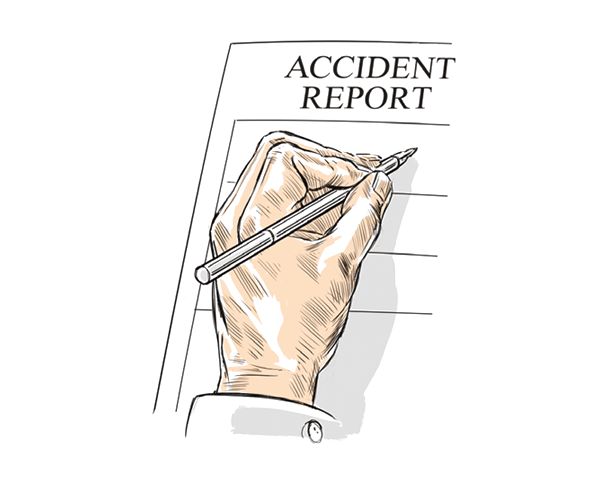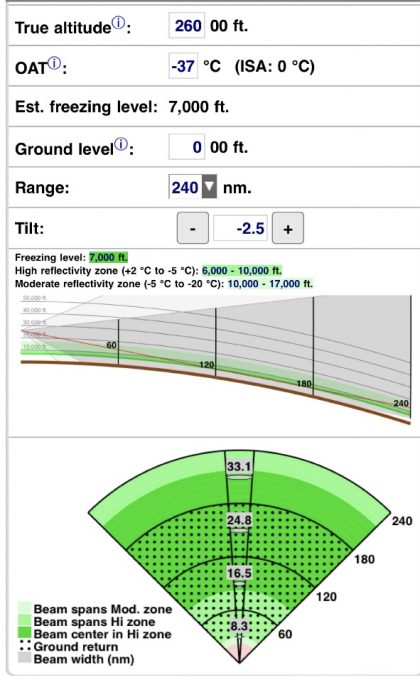Look, decide, execute
Cessna 152
G-BMXA
Bridge of Earn, Perthshire
Injuries: None
The aircraft departed Perth on a training flight and the plan was to route to Edinburgh and then return to Perth.
Approximately 15 minutes after take-off, thick white smoke began to enter the cabin through the heating vents.
The instructor took control from the student and began the checklist drills for an engine fire. He retarded the fuel mixture lever to idle cut-off and accelerated to VNE. However, he quickly realised that there were no signs of flames, only smoke. Therefore, he re-advanced the fuel mixture to fully rich to keep the engine running. He made a Mayday call to Perth Radio, appraised them of the situation and informed them of his intention to make a precautionary forced landing.
The instructor then told the student to liaise with ATC. The student entered the emergency code, 7700, on the transponder and kept ATC updated on the aircraft’s position. The instructor selected a field for landing and positioned the aircraft for the forced landing.
At approximately 400ft AGL, when sure of reaching the chosen field and of its suitability, the instructor selected full flap and shut down the engine. The aircraft landed in a field of recently planted crops, and the crew vacated and moved upwind taking the fire extinguisher with them. Neither crew member was injured, and the aircraft suffered no damage.
After leaving the aircraft, the crew could see that there was oil streaking down the left side of the aircraft and dripping to the ground from beneath the engine cowling. A subsequent examination of the engine revealed a crack in the engine crankcase.
AAIB Analysis The crack in the engine crankcase caused a significant oil leak, and this was the source of the smoke entering the cockpit. The instructor recognised there were no flames and decided to keep the engine running until he was certain of achieving a landing in his chosen field.
Given the scale of the leak, it is unlikely the engine would have kept running sufficiently long enough for the aircraft to reach an airfield. The field landing was an appropriate choice and was well executed.
Comment Early decision making and prompt action made the execution of a safe forced landing look easy. Had this pilot dithered and waited, a power-off forced landing would have been the likely outcome, making the execution much more difficult.
Seemed or was?
Cessna TU206
N6588X
Regina, New Mexico, USA
Injuries: None
The pilot reported that before take-off from a 1,700ft-long dirt airstrip with a 9,200ft density altitude, he set the flaps to 20°, held the brakes and ran the engine up to full power. He released the brakes, pulled back on the yoke and the aircraft accelerated. The pilot reported that the take-off roll ‘seemed longer and slower than usual’ and that, about two-thirds of the way down the runway, the airspeed was 45kt. Near the end of the runway, the aeroplane momentarily became airborne and reached about 15ft above ground level and then drifted right and settled back onto the ground. The aeroplane struck a bush and skidded left, the left landing gear collapsed and the left wing impacted terrain.
The pilot stated that the aeroplane was heavily loaded but was under the maximum allowable gross weight. He added that he believed the loss of control occurred because ‘the density altitude was high, the strip is very short and (the aeroplane) was heavily loaded’. He further stated that the aeroplane did not accelerate as quickly on the dirt as it did on the hard surfaces that he was used to using for take-offs.
NTSB Probable cause The pilot’s improper pre-flight performance planning for a high-density altitude take-off from a short, dirt airstrip, which resulted in impact with terrain.
Comment If something doesn’t seem right, pressing on isn’t likely to resolve the situation. Establish a firm ‘go’/‘no go’ point, make a decision and stick to it.
Torn up
Extra 330SC
OO-SDJ
Wickenby Aerodrome, Lincolnshire
Injuries: None
The pilot was performing an aerobatic flight overhead of Wickenby Aerodrome, Lincolnshire. Approximately 10 minutes into the flight, while performing a vertical climb manoeuvre, he felt a significant vibration in the left rudder pedal. He immediately aborted the manoeuvre and bought the aircraft into level flight. He reduced the speed and monitored the level of vibration, which did not significantly diminish. Therefore he decided to land the aircraft.
After landing the pilot found the fabric that covered the rear fuselage had ripped and that the loose fabric had been flapping in the airflow around the left side of the fuselage, inducing the rudder vibration.
The pilot had completed normal pre-flight inspections and did not identify any damage to the fabric prior to the flight.
The Ceconite 102 fabric was removed from the aircraft and sent to the AAIB for further examination. This identified that the failure was likely to have initiated at the front of the fabric panel adjacent to the right lower stringer which runs along the tubular steel space frame rear fuselage.
Initially, a lateral and axial tear is likely to have occurred, which would have progressed rearward along the stringer, until it met the skin surrounding the tail cone. The cause for the initial material failure could not be positively identified.
AAIB Comment In this instance the loose fabric caused sufficient aerodynamic disruption to be felt by the pilot through the rudder pedals. With the loose fabric exposed to the airflow it is likely that further tearing would have occurred, leading to possible entanglement with the control surfaces. The prompt action by the pilot in aborting the flight showed positive and timely decision making in light of an abnormal aircraft characteristic.
Comment A great illustration of, if something feels different or strange, a prompt landing is never a bad decision.
Crossed signals
Diamond DA 40
N4119S
Mesa, Arizona, USA
Injuries: None
The pilot reported that he intended to do touch-and-goes in the local traffic pattern. While on the downwind leg, the air traffic controller cleared him to land. During the landing roll, past the halfway point on the runway, he increased the engine power to full for take-off and told the controller that he was doing a ‘go-around’.
The controller immediately instructed him to exit the runway onto the last taxiway so the pilot ‘cut the entire power’, applied brakes and full right rudder, but the aeroplane skidded, exited the runway and impacted a concrete barrier.
The pilot added that he wanted to do touch-and-goes but did not accurately communicate his intentions to the air traffic controller.
NTSB Probable cause The pilot’s decision to abort a go-around with insufficient runway remaining to safely stop the aeroplane, which resulted in a loss of control, runway excursion and impact with a concrete barrier.
Comment While it is always best to share the same expectations as air traffic control, the overriding constraint has to be to remain in control of the aircraft. If ATC throws you a curveball that you aren’t sure about, even if it is of your own making, there is only one correct answer: ‘unable’.
Lapse to remember
Piper PA44
N2204X
Centralia, Illinois, USA
Injuries: None
The flight instructor in the twin-engine aeroplane reported that, during a simulated single-engine failure approach, the pilot under instruction reduced the left engine power setting to 12 inches of manifold pressure, which activated the landing gear warning horn.
Then, on downwind to land, the student performed the pre-landing checks and asked the instructor if he should deploy the landing gear. The instructor told the student to delay the action and deploy the landing gear during the final landing checks because the student was struggling to maintain altitude.
Shortly after turning to final, the student performed the final landing checks and provided verbal cues of completion but did not include the landing gear check.
The instructor said he was distracted and focused on corrections because the student was struggling to maintain altitude and the runway centreline during the final approach. The instructor did not verify that the gear was extended.
During the landing flare, the instructor realised that the landing gear was not extended, and he immediately took the controls. He levelled the aeroplane and landed on the runway with the gear retracted.
NTSB Probable cause The pilot receiving instruction failed to extend the landing gear and the flight instructor failed to verify that the landing gear was extended before landing. Contributing to the accident was the flight instructor’s delayed remedial action and distraction.
Comment Deferring an action past its usual moment, such as waiting to extend the gear, opens the way to a ‘lapse’.
If circumstances dictate that an action must wait, you would be well served by putting a barrier up to help you catch
the lapse before it turns into an accident. In this case, that might be keeping one hand on the gear selector until it is extended.







